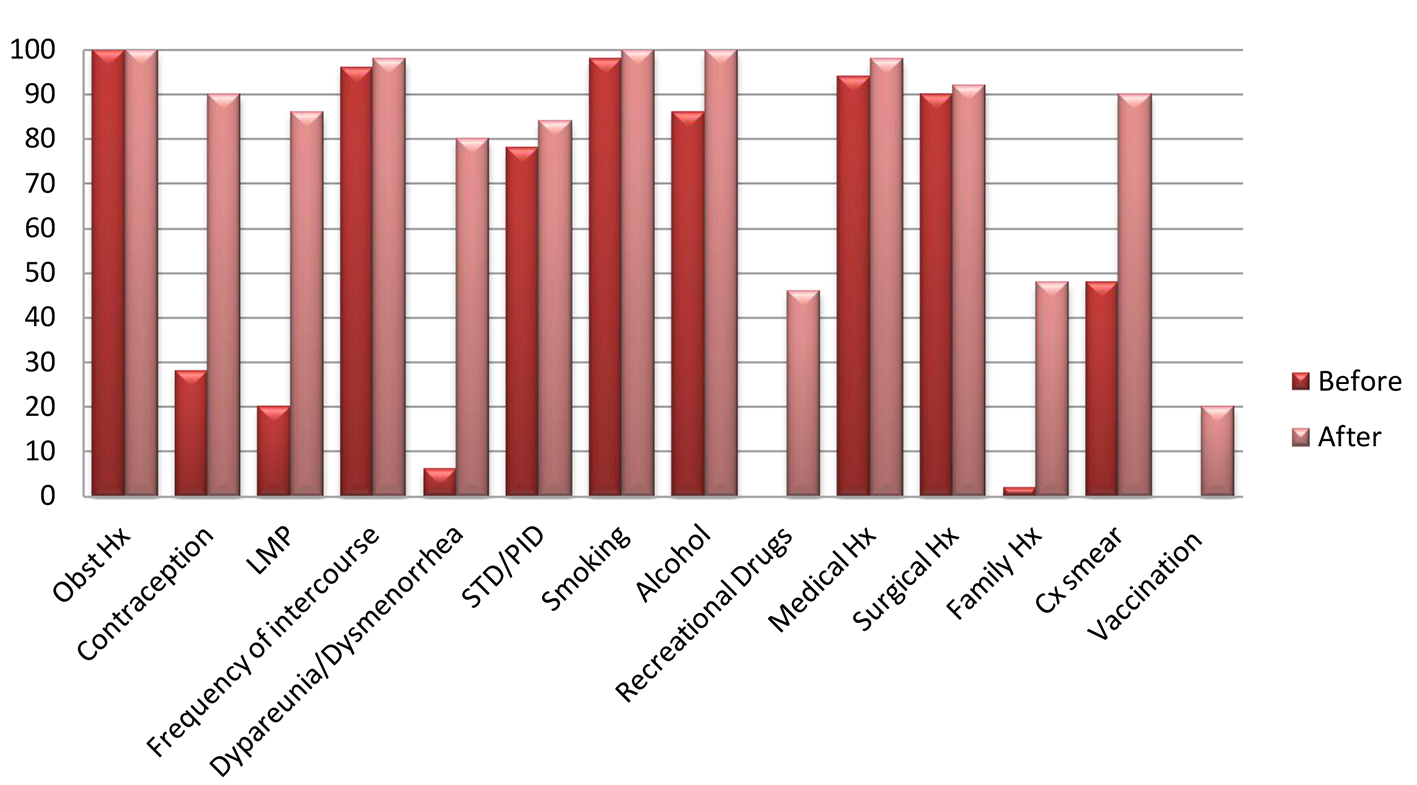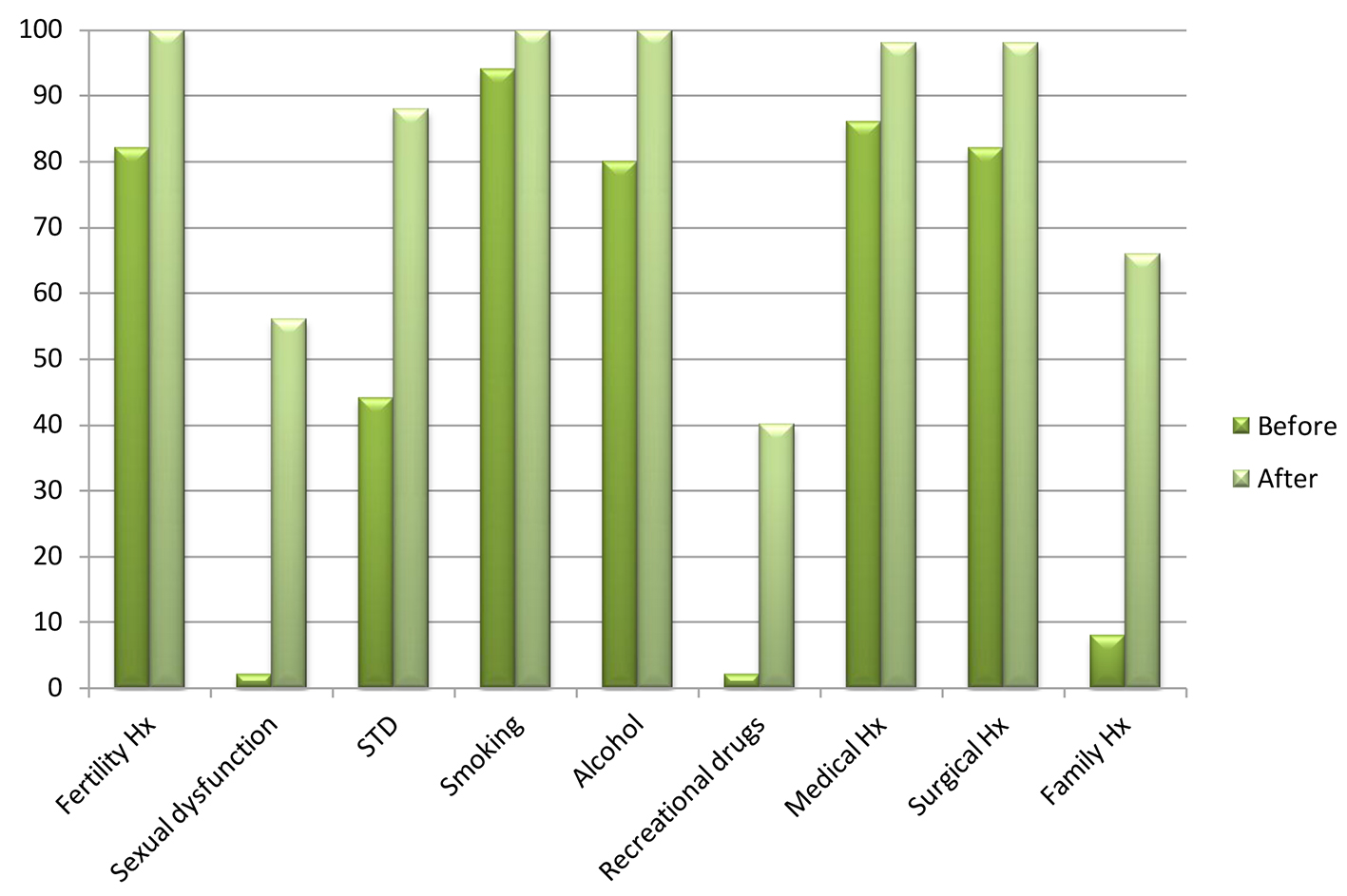
Figure 1. Transverse axis shows the necessary questions included in the standard history sheet for the female partners. Longitudinal axis shows the percentage of patients who were asked those questions before and after the introduction of the standard sheet.
